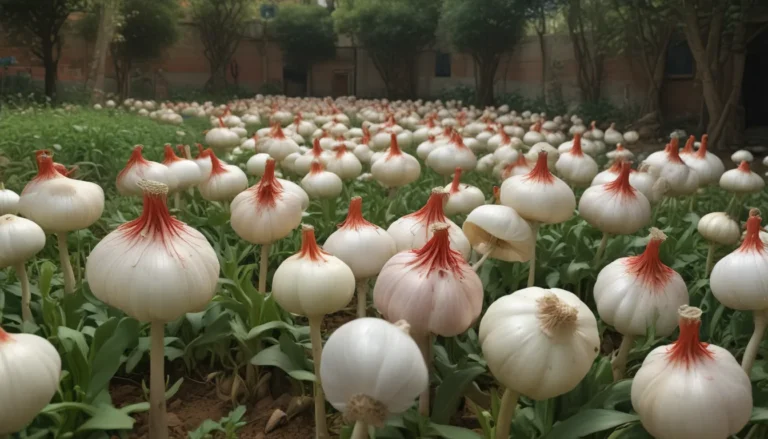The Comprehensive Guide to Growing Lemon Verbena in Your Home Herb Garden

Lemon verbena, scientifically known as Aloysia triphylla, is a versatile and fragrant herb that has long been cherished for its distinct aroma and diverse culinary uses. This woody herb, native to tropical regions of South America, has gained popularity in recent years for its unique flavor profile and aromatic properties.
In this detailed guide, we will explore everything you need to know about cultivating and caring for lemon verbena in your home herb garden. From propagation and cultivation to harvesting, preserving, and cooking, we will cover all aspects of growing this delightful herb.
What Is Lemon Verbena?
Lemon verbena, also known as lemon beebrush, is a perennial herb with lanceolate, lemon-scented leaves that are rich in citral. While the plant can grow up to 12 feet tall in its native habitat, it typically stays much smaller in North America. Lemon verbena is prized for its fragrant purple to white flowers and essential oils, which are commonly used in various products such as cleaning supplies and fragrances.
This versatile herb is a perennial in USDA Hardiness Zones 8 through 10, though it can be grown as an annual or potted plant in other regions. Lemon verbena thrives in full sun and moist, well-draining soil, making it an ideal addition to any herb garden.
Cultivation and History
Lemon verbena has been used for centuries in South America for its culinary and medicinal properties. The herb gained popularity in Europe in the 1700s and later made its way to North America. The plant is named after Queen Maria Luisa Teresa de Parma and is prized for its lemony flavor and fragrance.
Lemon verbena is a quick-growing shrub that can be propagated from seeds, cuttings, or seedlings. While the plant is relatively low-maintenance, it requires regular fertilization and pruning to maintain its shape and health. Whether grown in containers or in the ground, lemon verbena can thrive in a variety of climates with proper care.
Lemon Verbena Plant Propagation
From Seed
Starting lemon verbena from seeds can be a rewarding experience, though seeds harvested from homegrown plants may have lower germination rates. To plant lemon verbena seeds, allow the seed pods to dry out fully before collecting the seeds and sowing them in a seed-starting tray. Water regularly and provide ample sunlight for the seeds to germinate and grow into healthy plants.
From Cuttings
Taking cuttings from an existing lemon verbena plant can be an effective way to propagate new plants. Select a young, healthy branch with at least two leaf nodes and root the cutting in a container filled with seed-starting medium. Water the cutting regularly and provide sufficient sunlight for it to develop roots. Once rooted, the cutting can be transplanted into the ground or a larger container for further growth.
From Seedlings/Transplanting
Purchasing seedlings from a nursery or garden center is a convenient way to start growing lemon verbena. When planting seedlings, ensure the soil is well-draining and provide regular watering to establish healthy root systems. Lemon verbena thrives in full sun and benefits from regular fertilization to encourage robust growth and abundant foliage.
How to Grow Lemon Verbena
Lemon verbena is a sun-loving herb that thrives in full sunlight and moist, well-draining soil. To ensure optimal growth, provide at least six hours of sunlight per day and allow the top inch of soil to dry out between watering. Regular feeding with an all-purpose fertilizer in the spring and summer can help promote healthy growth and abundant foliage.
Lemon verbena is a versatile herb that can be grown in containers or in the ground, making it suitable for a wide range of garden settings. Pruning and shaping the plant in the spring can help maintain its compact growth habit and encourage bushier growth. Whether grown as an annual or perennial, lemon verbena can be a valuable addition to any herb garden.
Growing Tips
- Plant in full sun
- Allow the top inch of soil to dry out between watering
- Fertilize in the spring and summer
Pruning and Maintenance
Regular pruning and maintenance are essential for ensuring the health and vitality of lemon verbena plants. Pinching young stems can help encourage bushier growth and prevent legginess as the plant matures. Pruning dead branches and shaping the plant in the spring can help maintain its shape and promote new growth.
Whether grown as an annual or perennial, lemon verbena benefits from regular care and attention to ensure its longevity and productivity. By following simple pruning and maintenance practices, you can enjoy a healthy and vibrant lemon verbena plant year after year.
Where to Buy
When purchasing lemon verbena plants, look for the main species plant (Aloysia triphylla) for optimal results. Lemon verbena seedlings can typically be found at nurseries or garden centers, making it easy to add this herb to your garden. Avoid confusing lemon verbena with lemon balm, as they are distinct plants with different growing requirements and flavor profiles.
Lemon verbena plants can be found at reputable retailers such as Burpee, ensuring you receive high-quality plants for your herb garden. With its distinctive lemony flavor and fragrance, lemon verbena is a versatile herb that can elevate both sweet and savory dishes.
Managing Pests and Disease
While lemon verbena is relatively resistant to pests and diseases, it may occasionally attract common insects such as aphids, mealybugs, spider mites, and whiteflies. Regular inspection of the plant can help identify and address any pest or disease issues before they become severe.
Common pests such as aphids, mealybugs, and whiteflies can be controlled using organic methods such as insecticidal soap or neem oil. Spider mites, another common pest, can be managed by introducing predatory mites or ladybugs to the garden to help control the population.
Powdery mildew, a common fungal disease, can affect lemon verbena plants in warm, dry conditions. Preventative measures such as proper air circulation and regular monitoring can help reduce the risk of powdery mildew. Organic treatments such as sulfur powder or baking soda can be used to address powdery mildew if it occurs.
Harvesting
Harvesting lemon verbena leaves can be done by pulling individual leaves from the plant or cutting stems for a larger harvest. Leaves are best harvested just before the plant flowers for optimal flavor and fragrance. Harvested leaves can be used fresh or dried for later use in culinary applications or herbal remedies.
Preserving
Preserving lemon verbena leaves can be done by drying or freezing them for later use. Dried leaves retain their flavor and aroma and can be used in teas, infusions, and culinary dishes. Freezing leaves in ice cube trays with water can help preserve their freshness and flavor for extended periods.
Recipes and Cooking Ideas
Lemon verbena is a versatile herb that can be used in a variety of culinary applications. From teas and desserts to savory dishes and cocktails, lemon verbena adds a unique lemony flavor and aroma to dishes. The leaves can be used fresh or dried to infuse flavor into ice creams, sorbets, cakes, and beverages.
Grinding fresh lemon verbena leaves with sugar or salt can create flavored seasonings for both sweet and savory dishes. Lemon verbena leaves can also be used as a substitute for lemon juice in cocktails and cooked dishes, adding a delicate lemony flavor without the acidity.
When cooking with lemon verbena, add the leaves at the end of the cooking process to preserve their delicate oils and flavors. Avoid using essential oils internally and perform a skin patch test before using topical products containing lemon verbena oils.
Quick Reference Growing Guide
Here is a quick reference guide for growing lemon verbena in your herb garden:
- Plant Type: Woody perennial shrub
- Hardiness (USDA Zone): 8-10
- Exposure: Partial to full sun
- Water Needs: Moderate
- Maintenance: Low
- Soil Type: Loamy, loose
- Soil pH: 6.0-7.0
- Season: Spring-fall
- Spread: 6 feet
- Height: 12 feet
- Spacing: 6 inches (seeds), 3 feet (plants)
Companion plants for lemon verbena include bee balm, dill, hyssop, mint, and tarragon, while it should be avoided planting with lettuce, fuchsia, chard, kale. Lemon verbena attracts bees and butterflies to the garden, adding to its charm and functionality as a beneficial herb.
Make Lemon Verbena a Part of Your Herb Garden
In conclusion, growing lemon verbena in your home herb garden can be a rewarding and enjoyable experience. This versatile herb offers a unique lemony flavor and fragrance that can enhance a wide range of culinary dishes and recipes. Whether used fresh or dried, lemon verbena adds a refreshing and aromatic twist to teas, desserts, cocktails, and savory dishes.
By following the tips and guidelines outlined in this comprehensive guide, you can successfully cultivate and care for lemon verbena in your garden. From propagation and cultivation to harvesting and cooking, lemon verbena is a valuable addition to any herb garden.
Try incorporating lemon verbena into your garden this season and discover the many ways this delightful herb can elevate your culinary creations and herbal remedies. Share your experiences and favorite lemon verbena recipes in the comments below and join the community of herb enthusiasts growing and enjoying this versatile herb.





